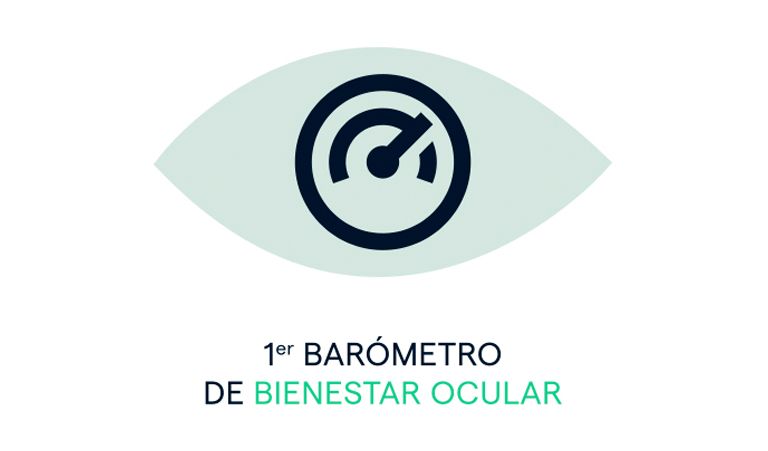
2 out of 3 people believe that their visual health ranges from fair to poor
We get a feel for the eye health of Spaniards through the First Barometer on Eye Wellness
Mediante una encuesta a 720 personas y una consulta a un centenar de oftalmólogos de nuestro grupo, hemos elaborado el 1er Barómetro de Bienestar Ocular. Según este estudio de Miranza, 2 de cada 3 españoles consideran que tienen una salud visual entre regular y mala. Un punto de inflexión son los 45 años, edad a partir de la cual la satisfacción con el estado visual baja en picado: de un 50% de los encuestados entre los 36 y los 45 años, a solo un 24% entre los 46 y los 65 años.
Age and lifestyle are key factors in visual health
Other factors that account for the worst eye health outcomes, as revealed by the Eye Wellness Barometer, are lack of sleep and screen overuse.
Did you know that 29% of those who sleep less than 6 hours a day and 24% of those who use screens more than 8 hours a day define their vision as “bad” or “very bad”, compared to the average of 19%?
8 out of 10 acknowledge some vision impairment, with presbyopia or eyestrain and refractive errors being the most common eye problems and sensitivity to light (photophobia), poor vision, blurred vision, as well as tearing or itching, the alterations or symptoms that have the greatest impact on daily life. Among the most severe limitations to their visual health, respondents highlighted reading, working on the computer and driving at night.
Likewise, the most common complaints (up to 54% of those surveyed) are dependence on glasses or contact lenses to carry out their daily tasks, as well as the appearance of their eyes (dark circles, drooping eyelids, bulging eyes or exophthalmos) and the fact that they feel they have less control over what they do because of their eyesight.
An interesting fact: the degree of frustration due to visual health limitations is multiplied by 4 among young people between the ages of 20 and 35, 30% of whom say they are frustrated by it, compared to 8% of those over the age of 65.
Expert opinion in the Eye Wellness Barometer
All this fits in with the external factors that, according to Miranza’s specialists, have the greatest impact on eye wellness, pointing, firstly, to the level of light and, secondly, to the use of screens. They also highlight other factors, whose effect may not be so evident to people, such as the use of contact lenses, constantly overfocusing on near vision or air conditioning and heating.

Ramón Berra, Miranza’s general manager, together with Anne Igartiburu, with doctors Javier Mendicute (Miranza Begitek) and Carlos Mateo (IMO Grupo Miranza), at the presentation of the Eye Wellness Barometer
As to the factors intrinsic to the eye, what most directly affects the visual health of Spaniards according to the ophthalmologists taking part in the Eye Wellness Barometer is visual acuity and the degree of central vision, followed by the quantity and quality of tears, as well as eyelid or orbit malformations or malpositions, corneal irregularities and the optical quality of the visual system.
The five pathological causes of poor visual health with the highest incidence are as follows: AMD, dry eye, dysfunctional lens syndrome (cataract and presbyopia), refractive errors and corneal scarring.
Miranza’s professionals propose a ranking of diagnostic tests to measure decisive factors in visual health, including visual acuity test, fundus test, ocular allergy test, reading speed test, OCT, Randot stereo test (measurement of stereoscopic or depth vision), Scatter index, OSI or light scattering (OQAS) and tests on the quantity and quality of tears, such as those we perform at our Dry Eye Departments.
Practical prevention tips for better eye health
Practical prevention tips for better eye health
Although 3 out of 4 people surveyed in the Eye Wellness Barometer say they go for eye check-ups every year or every two years, whereas experts believe that the majority adopt habits that are not conducive to visual health and should be corrected or minimised. This is the case of the overuse of screens and other devices (40% of those surveyed spend more than 8 hours a day), stress (almost 1 in 2 say they suffer a great deal or a lot of stress) and the low use of artificial tears to moisturise the ocular surface (19% use them), as well as smoking and a poor quantity or quality of rest. Another handicap that ophthalmologists point out regarding poor visual health in Spain is the absolute predominance of near vision over distance vision.
Did you know that near vision (mobile phones, reading, etc.) is the vision most used by 54% of those surveyed, compared to 39% who prioritise intermediate vision (computer) and 7% distant vision?
Taking into account the main factors that threaten the visual health of the Spanish population and applying them to an individual, at Miranza we have developed this portrait so that you can identify which points of the Barometer you should pay more attention to and ask your ophthalmologist, if appropriate.
